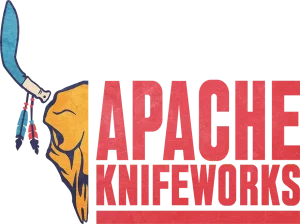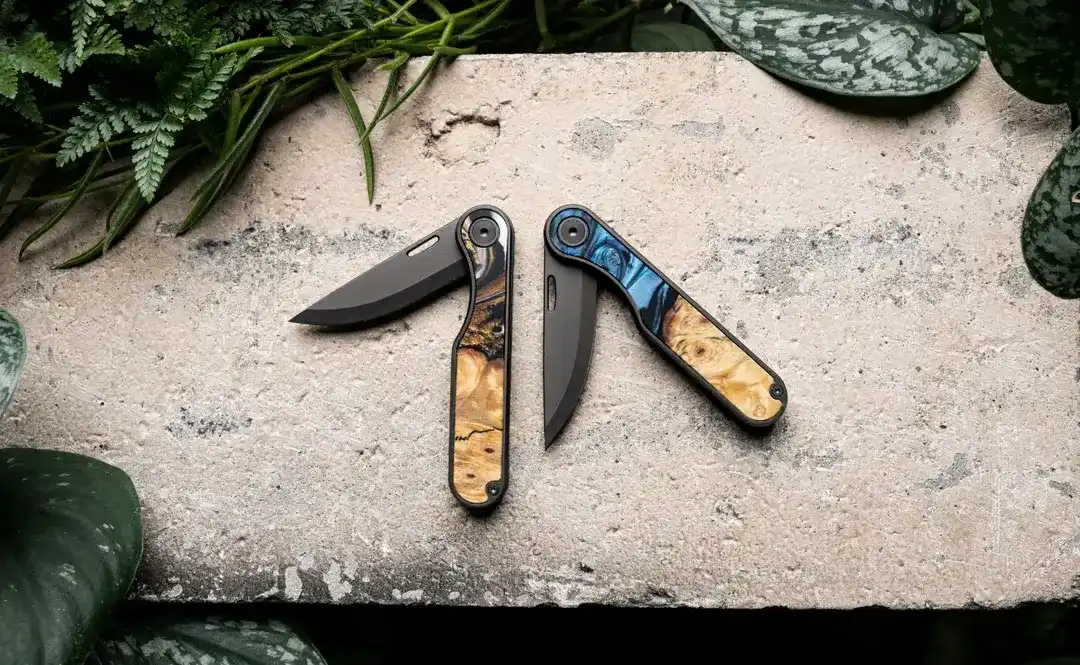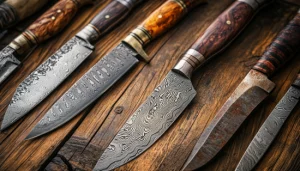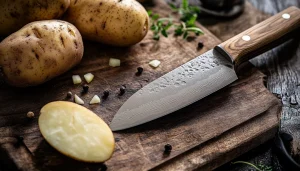What Is a Minimalist Knife?
A minimalist knife is exactly what it sounds like—a knife stripped down to the essentials. No flashy gimmicks, no bulky handles, no unnecessary features. It’s designed to do one thing well: cut cleanly and efficiently, without weighing you down or taking up space.
Core Characteristics That Define It
Minimalist knives are all about form meeting function. Here’s what sets them apart:

- Compact Size: These knives are small enough to fit in your pocket, on a keychain, or even clip onto your belt without feeling like you’re hauling gear.
- Lightweight Build: Most weigh next to nothing, making them ideal for everyday carry (EDC) or outdoor use where every ounce counts.
- Simple Design: Think clean lines, no frills. The blade and handle are often one seamless piece or connected with minimal hardware.
Materials That Matter
Minimalist doesn’t mean cheap. These knives often use high-performance materials that balance durability with weight:
- Stainless Steel: Corrosion-resistant and easy to maintain. Great for general use.
- Carbon Fiber: Ultra-light and strong, though usually pricier.
- G10: A fiberglass-based laminate that’s tough, grippy, and weather-resistant—perfect for handles.
Minimalist vs. Traditional Knives
Traditional knives tend to be larger, heavier, and more feature-packed—think multi-tools, serrated edges, or decorative handles. Minimalist knives ditch all that in favor of streamlined utility. They’re not trying to be everything at once. Instead, they focus on being the best at one thing: cutting cleanly and reliably.
In short, minimalist knives are the anti-hype tool for people who value simplicity, portability, and performance. They’re not just a trend—they’re a shift in how we think about everyday tools.
Key Features of Minimalist Knives
Minimalist knives aren’t just about looking sleek—they’re built to be functional, efficient, and easy to carry. Let’s break down what makes these blades stand out.
Blade Types & Lengths That Matter
Minimalist doesn’t mean boring. These knives come in a few popular blade styles, each with its own vibe and purpose:
- Drop Point: The go-to for versatility. Great for slicing, piercing, and general use. It’s the Swiss Army knife of blade shapes—without the bulk.
- Tanto: Inspired by Japanese blades, this angular tip is all about strength and precision. Ideal for tactical use or when you need a bit more punch.
- Fixed vs. Folding: Fixed blades are solid and reliable, perfect for outdoor or survival scenarios. Folding knives, on the other hand, are compact and pocket-friendly, making them a favorite for everyday carry (EDC).
Most minimalist blades fall in the 2 to 3.5-inch range—small enough to be discreet, but big enough to get the job done.
Handle Design & Ergonomics
A minimalist knife’s handle is where smart design really shines. You won’t find bulky grips or unnecessary curves here. Instead, expect:
- Slim profiles that slide easily into pockets or packs.
- Textured materials like G10 or micarta for a solid grip without the weight.
- Ergonomic shaping that fits naturally in your hand, even if it’s just a few inches long.
It’s all about comfort and control, without sacrificing the knife’s low-profile appeal.
Carry Options That Fit Your Life
Minimalist knives are built for people on the move. Whether you’re hiking, commuting, or just opening Amazon packages, there’s a carry style for you:
- Neck Carry: Lightweight fixed blades worn around the neck—stealthy and always within reach.
- Pocket Clip: The classic EDC setup. Clip it to your jeans or bag and forget it’s even there.
- Belt Loop: For those who want quick access and don’t mind a little extra gear on their waist.
The goal? Convenience without compromise.
Utility First, Always
Minimalist knives have a simple philosophy: do more with less. These knives aren’t trying to be multi-tools or survival kits. They’re built for everyday tasks—cutting rope, opening boxes, slicing fruit—and they do it with style and efficiency.
Minimalist knives are the kind of gear you carry because you actually use it. No fluff, no filler—just a sharp edge and smart design.
Why Are Minimalist Knives Gaining Popularity?
Minimalist knives aren’t just tools anymore—they’re a lifestyle statement. Their rise in popularity is tied to a few major cultural shifts that are reshaping how people think about gear, utility, and everyday essentials.
Everyday Carry (EDC) Culture Is Booming
The EDC movement has exploded in recent years. People are more intentional about what they carry daily—opting for gear that’s useful, reliable, and unobtrusive. Minimalist knives fit this mold perfectly. They’re small enough to disappear in your pocket but sharp enough to handle anything from opening packages to slicing fruit on a hike.
- Function over flash is the new cool.
- EDC fans love gear that’s versatile, durable, and easy to carry.
- Minimalist knives check all those boxes without the bulk.
Loved by Outdoor Junkies, Survivalists & City Dwellers Alike
Whether you’re deep in the woods or navigating concrete jungles, minimalist knives are proving their worth.
- Outdoor enthusiasts appreciate the lightweight build and reliability—perfect for camping, hiking, or fishing.
- Survivalists dig the simplicity and strength. No moving parts means fewer things that can break.
- Urban users love the discreet design. It’s a tool that blends into daily life without screaming “I’m carrying a knife.”
In short, it’s a one-size-fits-all solution for people who want to be prepared without looking like they’re headed into battle.
Minimalism Is More Than a Trend—It’s a Movement
From tiny homes to capsule wardrobes, the minimalist lifestyle is all about cutting the clutter and focusing on what matters. That mindset is bleeding into gear choices too.
- A minimalist knife is the antidote to over-engineered tools.
- It’s about intentional design—every curve, material, and feature has a purpose.
- People are tired of excess. They want gear that works, lasts, and doesn’t weigh them down.
This shift in values is driving demand for products that reflect simplicity and purpose—and minimalist knives are leading the charge.
Social Media & Gear Influencers Are Fueling the Hype
Instagram and YouTube are shaping buying decisions more than ever. Gear influencers and EDC content creators are showcasing sleek, compact knives that look good and perform even better.
- Aesthetic appeal matters. Minimalist knives photograph well and fit the “clean carry” vibe.
- Influencers are pushing brands that focus on quality over quantity.
- Reviews, unboxings, and pocket dumps are turning these knives into must-have items.
The result? A surge in interest from people who never considered carrying a knife before.
Popular Brands and Models
Minimalist knives have carved out a serious niche, and some brands are leading the charge with designs that are sleek, functional, and built to last. Whether you’re into EDC, outdoor gear, or just want something sharp that doesn’t scream “tactical,” these names are worth knowing.
Leading Brands That Get It Right
These companies consistently deliver knives that nail the minimalist vibe without sacrificing performance:
- CRKT (Columbia River Knife & Tool) – Known for innovative designs and collaborations with top knife makers. CRKT blends style with utility, often at a budget-friendly price.
- Gerber – A household name in knives and tools. Their minimalist offerings are rugged, reliable, and built for real-world use.
- Civivi – A rising star in the knife world. Civivi focuses on clean aesthetics, premium materials, and smooth action—all without breaking the bank.
- SOG – Tactical roots with a modern twist. SOG’s minimalist models are compact, durable, and often feature clever carry options.
Standout Models Worth Checking Out
Here are a few knives that consistently get love from the community and reviewers alike:
- CRKT Pilar
- Blade: 2.4″ stainless steel, drop point
- Use Case: Urban EDC, utility tasks
- Why It’s Loved: Compact, ergonomic, and surprisingly tough for its size.
- Gerber Jukebox
- Blade: 2.7″ stainless steel, straight edge
- Use Case: Stylish EDC, light-duty cutting
- Why It’s Loved: Retro barber-style blade with modern materials—looks sharp, cuts sharper.
- Civivi Elementum
- Blade: 2.9″ D2 steel, drop point
- Use Case: All-around EDC
- Why It’s Loved: Smooth action, clean design, and premium feel at a mid-range price.
- SOG Instinct Mini
- Blade: 1.9″ stainless steel, fixed blade
- Use Case: Neck carry, backup blade
- Why It’s Loved: Ultra-light, discreet, and ready for quick access.
What the Community Is Saying
Minimalist knife fans are vocal—and they’re not shy about sharing what works. Across forums, YouTube reviews, and social media, a few themes keep popping up:
- “Less is more” is the mantra. Users love knives that do the job without extra weight or complexity.
- Build quality matters. Even small knives need solid materials and tight tolerances.
- Carry comfort is key. If it doesn’t ride well in a pocket or on a belt, it’s not making the cut.
The consensus? These knives aren’t just trendy—they’re practical, stylish, and built for real life.
Practical Uses for Minimalist Knives
Minimalist knives aren’t just pocket candy—they’re workhorses in disguise. Whether you’re in the city, out in the wild, or just trying to open that stubborn Amazon box, these compact blades earn their keep.
Everyday Tasks You’ll Actually Use Them For
Most people aren’t carving wood or skinning game daily. But minimalist knives shine in the mundane moments that pop up constantly:
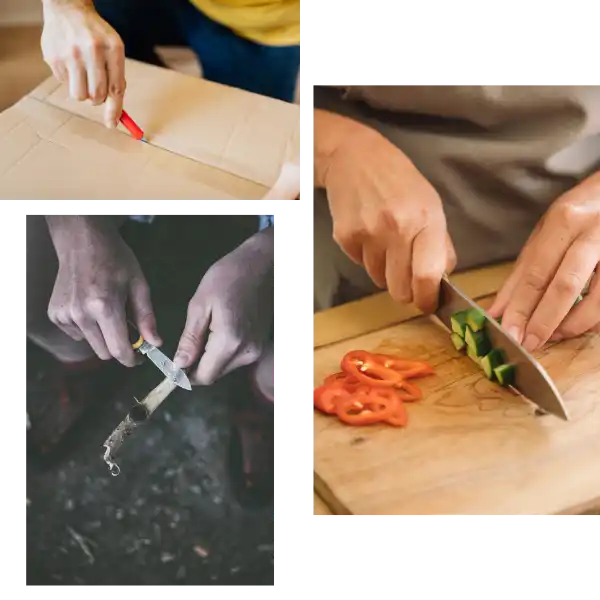
- Opening packages: Cardboard, tape, zip ties—no problem.
- Food prep: Slicing fruit, cutting cheese, or prepping a snack on the go.
- Minor repairs: Cutting rope, stripping wires, or tightening screws (some minimalist knives include a multi-tool edge or screwdriver tip).
They’re the kind of tool you forget you’re carrying until you need it—and then you’re glad you did.
Outdoor Activities Where They Hold Their Own
Minimalist doesn’t mean fragile. These knives are built to handle real outdoor use without weighing down your pack:
- Camping: Cut paracord, prep kindling, or slice food—lightweight and reliable.
- Hiking: Easy to carry, quick to access, and perfect for trail snacks or gear fixes.
- Fishing: Clean lines, cut bait, or handle knots—without rusting or slipping.
They’re not survival knives, but they’re damn useful when you need a sharp edge in the wild.
Emergency & Self-Defense Scenarios
Sometimes you need a knife for more than convenience. Minimalist knives can be a last-resort tool in emergencies:
- Breaking glass, cutting seatbelts, or handling unexpected situations.
- In self-defense, a minimalist knife is quick to deploy and easy to conceal—but it’s not a weapon you want to rely on unless you’ve trained for it.
Important
If you’re carrying for self-defense, know your local laws and be smart about how and where you carry.
Legal Considerations You Shouldn’t Ignore
Knife laws vary wildly depending on where you live—and ignorance isn’t a defense. Here’s what to keep in mind:
- Blade length restrictions: Many places cap legal carry at 2.5–3 inches.
- Fixed vs. folding: Folding knives are generally more accepted for EDC.
- Concealed carry laws: Some states treat concealed knives like weapons—check your local regulations.
- Intent matters: Carrying a knife for utility is fine. Carrying one with the intent to use it as a weapon? That’s a legal headache waiting to happen.
Bottom line: Do your homework before you clip one to your belt. Minimalist knives are designed to be practical, not problematic.
How to Choose the Right Minimalist Knife
Picking a minimalist knife isn’t rocket science—but it’s not something you want to wing either. The right blade should fit your lifestyle, your hand, and your budget. Here’s how to make a smart choice without overthinking it.
Key Factors to Consider
Before you hit “buy now,” ask yourself what you actually need the knife for. That’ll steer you toward the right features.
- Blade Material:
Go for stainless steel if you want low maintenance and solid corrosion resistance. If you’re after edge retention and toughness, D2 or S35VN steels are worth the extra cash. Avoid mystery metals—if the brand won’t tell you what it is, it’s probably junk. - Size:
Most minimalist knives fall between 2 to 3.5 inches in blade length. If you want something discreet for EDC, stick to the lower end. Need a bit more cutting power for outdoor use? Go bigger—but not bulky. - Intended Use:
Are you opening boxes, slicing fruit, or prepping kindling? Match the knife to your most common tasks. Drop point blades are great all-rounders. Tanto blades are better for piercing and tactical vibes. Fixed blades are more rugged, while folders are easier to carry. - Budget:
You don’t need to spend a fortune. Solid minimalist knives start around $30–$50, and you can get premium materials and smooth action in the $70–$100 range. Anything above that is usually about brand prestige or exotic materials.
Tips for First-Time Buyers
If you’re new to knives, don’t get sucked into the gear-head rabbit hole. Start simple and upgrade later.
- Stick with trusted brands like CRKT, Civivi, Gerber, SOG, or even a local knife maker you highly trust. They’ve got solid reputations and plenty of options.
- Read real user reviews, not just polished marketing blurbs. Reddit, YouTube, and EDC forums are gold mines for honest feedback.
- Try before you commit, if possible. Grip, weight, and pocket feel matter more than specs on paper.
Maintenance & Care Advice
Minimalist knives are low-maintenance, but they’re not no-maintenance. A little care goes a long way.
- Clean the blade regularly, especially after food prep or outdoor use. A quick wipe with a damp cloth and dry towel does the trick.
- Oil the pivot if it’s a folding knife. A drop of lubricant keeps the action smooth and prevents rust.
- Sharpen when needed. Don’t wait until it’s dull and useless. A basic sharpening stone or guided system will keep your edge crisp.
And don’t forget—store it dry and safe. Tossing it in a drawer with loose change and keys is a fast track to scratches and dullness.
Final Thoughts: Why Minimalist Knives Are More Than Just a Trend
Minimalist knives aren’t just riding the wave of hype—they’re reshaping how people think about everyday tools. In a world overloaded with gear, gadgets, and gimmicks, these knives cut through the noise (literally and figuratively). They’re proof that simplicity, smart design, and real-world utility still matter.
Whether you’re an EDC junkie, a weekend hiker, or just someone who wants a reliable blade to open packages and slice apples, there’s a minimalist knife out there that fits your lifestyle. The beauty of these knives is that they don’t try to be everything—they just do one thing really well, and they do it with style.
Ready to Find Your Perfect Blade?
Here’s your nudge to explore:
- Think about how you’ll use it—daily tasks, outdoor adventures, or just-in-case moments.
- Set a budget and stick to it. You don’t need to drop a fortune to get something solid.
- Start with trusted brands like CRKT, Civivi, Gerber, or SOG. They’ve got options for every type of user.
And hey, this blog isn’t just a one-way street.
